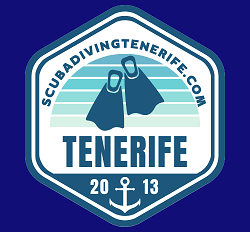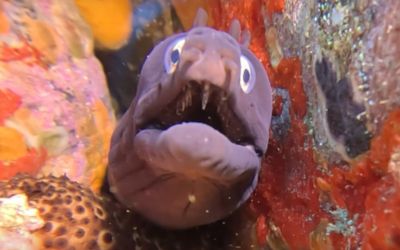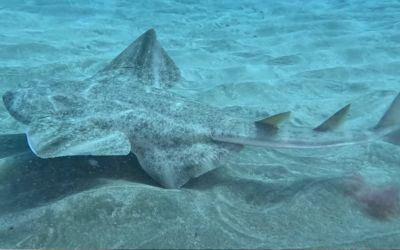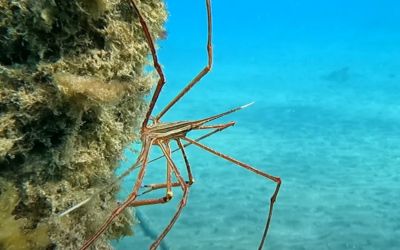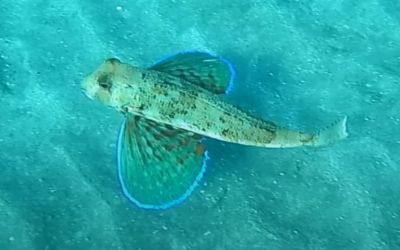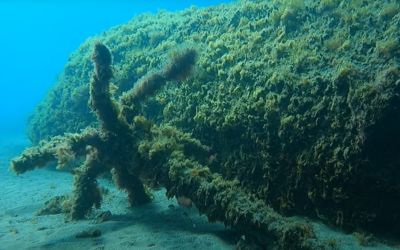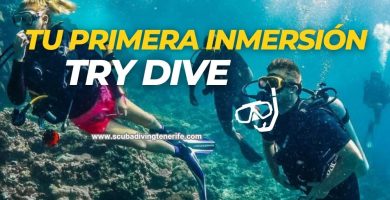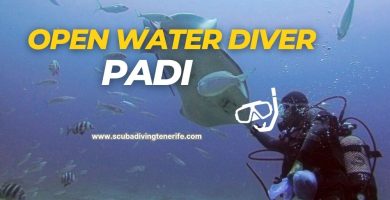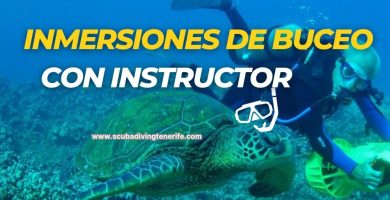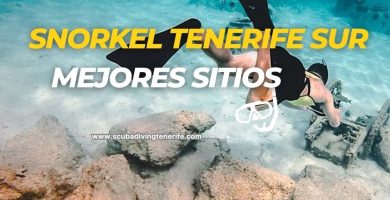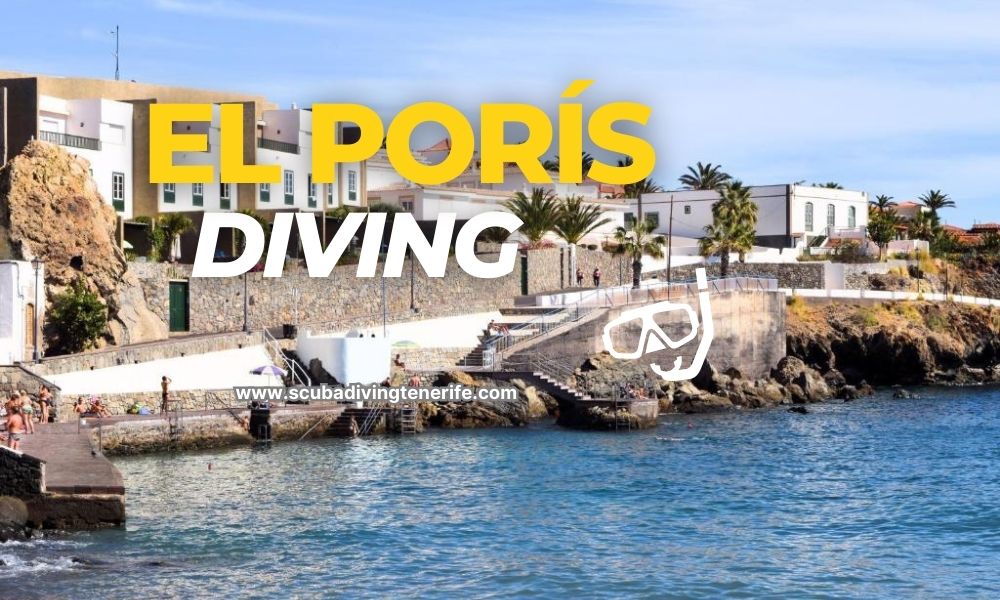
El Porís is a diving area off the coast of Tenerife with a depth ranging from the first few meters to 25 meters.
The area is suitable for divers of all levels, including those who are just starting to dive.
The bay is especially interesting for the observation of marine fauna related to seagrass beds and is recommended for companions in summer.
🧭 The best diving areas in El Porís
The most interesting areas to dive in El Porís are the small caves at the end of the pier wall, the veril and the rocky area, as well as the area away from the coast with sea grass. You can also dive on the other side of the bay, from the small dock of Playa Grande, in La Punta.
Abona Lighthouse
Faro de Abona is an ideal area for several dives in Tenerife. The bottom is very rugged and drops sharply from 20 meters to depths of over 45 meters, which makes it suitable for experienced divers.
Access to Faro de Abona is by boat from the El Poris pier. The ideal weather conditions are only present in 20% of the year (with light trade winds, south weather and boom time). It is also important to carry a decompression buoy and to keep an eye on the current, which is very frequent and can be moderate to strong.
Punta de Abona
The diving area in Punta de Abona is characterized by its black coral walls and rock formations. The average depth of this area is 30 meters, with a maximum depth of more than 45 meters. It is an area recommended for experienced divers.
The area of Punta de Abona is recommended for experienced divers, due to the depth and the possible presence of strong currents. In addition, the weather conditions are ideal only 20% of the year, being necessary the presence of light trade winds, south weather and good weather. It is recommended to carry a decompression buoy and be aware of the current.
🐠 What marine species can be seen in the area?
- Angelshark: is a species of shark with the shape of a ray and a protuberance on the head. It is gray or brown in color and is in danger of extinction due to overfishing.
- Small sea horse: Small horse-shaped fish, characterized by its body covered with bony plates and its ability to camouflage itself in its environment.
- Pejepipa: Fish with an elongated and slender body with long dorsal and pectoral fins. It usually lives in sandy bottoms and feeds on small crustaceans and mollusks.
- Vieja: Fish with a robust and flattened body, with a protuberance on the forehead. It inhabits rocky bottoms and feeds mainly on algae and small invertebrates.
- Rubio: A small, silver-colored fish, with a black spot at the base of the pectoral fin. It lives in rocky bottoms and feeds on small crustaceans and mollusks.
- Frogfish: Fish with an oval and flattened body, with a large mouth and sharp teeth. It usually inhabits sandy bottoms and feeds on other fish and crustaceans.
- Suction fish: Fish with an elongated and flattened body, with a large suction cup on the bottom. It inhabits rocky bottoms and feeds on small invertebrates.
- Jurel: Fish with an elongated and flattened body, silver in color. It lives in sandy bottoms and feeds mainly on small fish and crustaceans.
- Chopa: Fish with an oval and flattened body, dark brown with lighter spots. It inhabits rocky bottoms and feeds on small invertebrates.
- Lizardfish: Fish with an elongated and flattened body, with colored spots on its body. It lives in rocky bottoms and feeds mainly on crustaceans and mollusks.
- Gallito: A small, silver-colored fish with a sail-shaped dorsal fin. It inhabits rocky bottoms and feeds on small crustaceans and mollusks.
- Cabrilla: Fish with an elongated and flattened body, with dark spots on its body. It lives in rocky bottoms and feeds on small fish and crustaceans.
- Romero: Fish with an oval and flattened body, light brown with dark spots. It inhabits rocky bottoms and feeds on small crustaceans and mollusks.
- Carmelita: Fish with an elongated and flattened body, with dark spots on its body. It lives in rocky bottoms and feeds on small fish and crustaceans.
- Octopus: Cephalopod mollusk with a soft body and eight arms. It inhabits rocky bottoms and feeds on crustaceans and small fish.
- Choco: Cephalopod mollusk with a soft and flattened body. It lives in sandy bottoms and feeds on crustaceans and small fish.
- Sponges: Sessile organisms that live fixed to the seabed and feed on organic particles.
🤿 Diving conditions in El Porís de Abona
Access to the diving area is from the shore, using a concrete staircase on the pier. The area is very crowded, so it is recommended to respect the usual anglers in the area.
Current is infrequent, but if there is, care must be taken on the return, which may be against the current.
The type of seabed varies between veril and scree, and in the area furthest from the coast, it is sandy with sea grass. The area is suitable for technical diving and offers ideal conditions 70% of the year.
📍How to get there?
El Porís belongs to the municipality of Arico. To get to El Porís de Abona in Tenerife by car, you can take the TF-1 highway and exit at exit number 39, in the direction of El Porís. Once on the main road, continue along it until you reach the traffic circle at the entrance of the village. From there, continue along the same road until you reach the coast and find the parking area near the pier.
